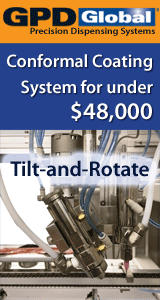What you have run up against is the unfortunate consequence of the transition period from Sn-Pb to Pb-free. In the past 2-3 years there have been several studies highlighting the differences in reliability between mixed metal systems, Sn/Pb, and SAC systems.
Hillman, et al. (CMAP, Toronto, 2005) showed the disastrous consequences of not completely reflowing the solder joint and having a Pb-rich region in the solder joint.
More recently Pan, et al. (IPC/JEDEC, San Jose, 2005) summarized some of the previous work, including reliability studies done by Solectron where they showed an impact in reliability, but in some cases may be acceptable, as long as the correct temperature is achieved in order to get complete mixing. This paper also provides the methods to calculate the reflow temperature needed in order to get complete mixing (based on the bump size, alloy, and paste deposit).
Of course, as you guessed, it is going to be higher than a standard tin-lead reflow temperature. Therefore you need to insure that you Sn/Pb flux system is capable of withstanding the higher temperatures without suffering flux exhaustion.
There are a few vendors today who offer "transition" solder pastes, that are Sn/Pb alloy based, with a flux medium that can survive higher temperatures. Profile the PCB (with all the components populated) to be sure the BGA solder joints achieve the desired temperature, then cross section the solder joints to make sure the solder joint looks homogenous. Depending on your end customer you may need to provide reliability data.
Dr. Brian Toleno, Application Engineering Henkel Technologies
Dr. Brian Toleno is the Application Engineering Team leader for Henkel Technologies. He is responsible for the technical service and application engineering for Henkel's electronics assembly materials, including solder paste, underfills, PCB protection materials, and underfills. He holds a Ph.D. in Analytical Chemistry from The Pennsylvania State University and a B.S. degree in Chemistry from Ursinus College. brian.toleno@us.henkel.com
--------------------------------------------------------------------------------
This is a very common question. There are papers that have been published that show the lead/tin soldered SAC BGAs have comparable reliability to tin lead BGAs as long as collapse of the SAC ball is achieved. The indicator was thermal cycle testing to draw this conclusion. A 230C reflow temperature is a tight process window but will accomplish collapse provided there is not too much of a temperature gradient across the board.
However there are other studies that indicate the bulk alloy properties are greatly reduced with traces of lead in SAC alloys.
So it really comes down to how the product is going to be used.
Depending on your final produce drop testing , thermal cycle testing , and vibration testing may be required.
I would not recommend this process for high reliability boards or boards that have a drop requirement.
Karl Seelig, Vice President of Technology AIM
In his 25 years of industry experience, Mr. Seelig has authored over 30 published articles on topics including lead-free assembly, no-clean technology, and process optimization. Karl holds numerous patents, including four for lead-free solder alloys, and was a key developer of no-clean technology. kseelig@aimsolder.com
reply »
![]() Can someone advise if there is any risk if we use lead-free ...
- Oct 31, 2006
by
Can someone advise if there is any risk if we use lead-free ...
- Oct 31, 2006
by
![]()
![]() The is a serious concern of lead contamination of leadfree s...
- Oct 31, 2006
by
davef
The is a serious concern of lead contamination of leadfree s...
- Oct 31, 2006
by
davef
![]()
![]()
![]() What you have run up against is the unfortunate consequence ...
- Nov 01, 2006
by
davef
What you have run up against is the unfortunate consequence ...
- Nov 01, 2006
by
davef
![]()
![]()
![]() Also, have you considered the possibility that if you solder...
- Nov 07, 2006
by
muse
Also, have you considered the possibility that if you solder...
- Nov 07, 2006
by
muse
![]()
![]()
![]() Hi Davef,
do you have the paper you reference? Pan, et al. ...
- Nov 08, 2006
by
Hi Davef,
do you have the paper you reference? Pan, et al. ...
- Nov 08, 2006
by
![]()
![]() Dr. Brian Toleno wrote that section of the posting that I pa...
- Nov 08, 2006
by
davef
Dr. Brian Toleno wrote that section of the posting that I pa...
- Nov 08, 2006
by
davef
![]()







